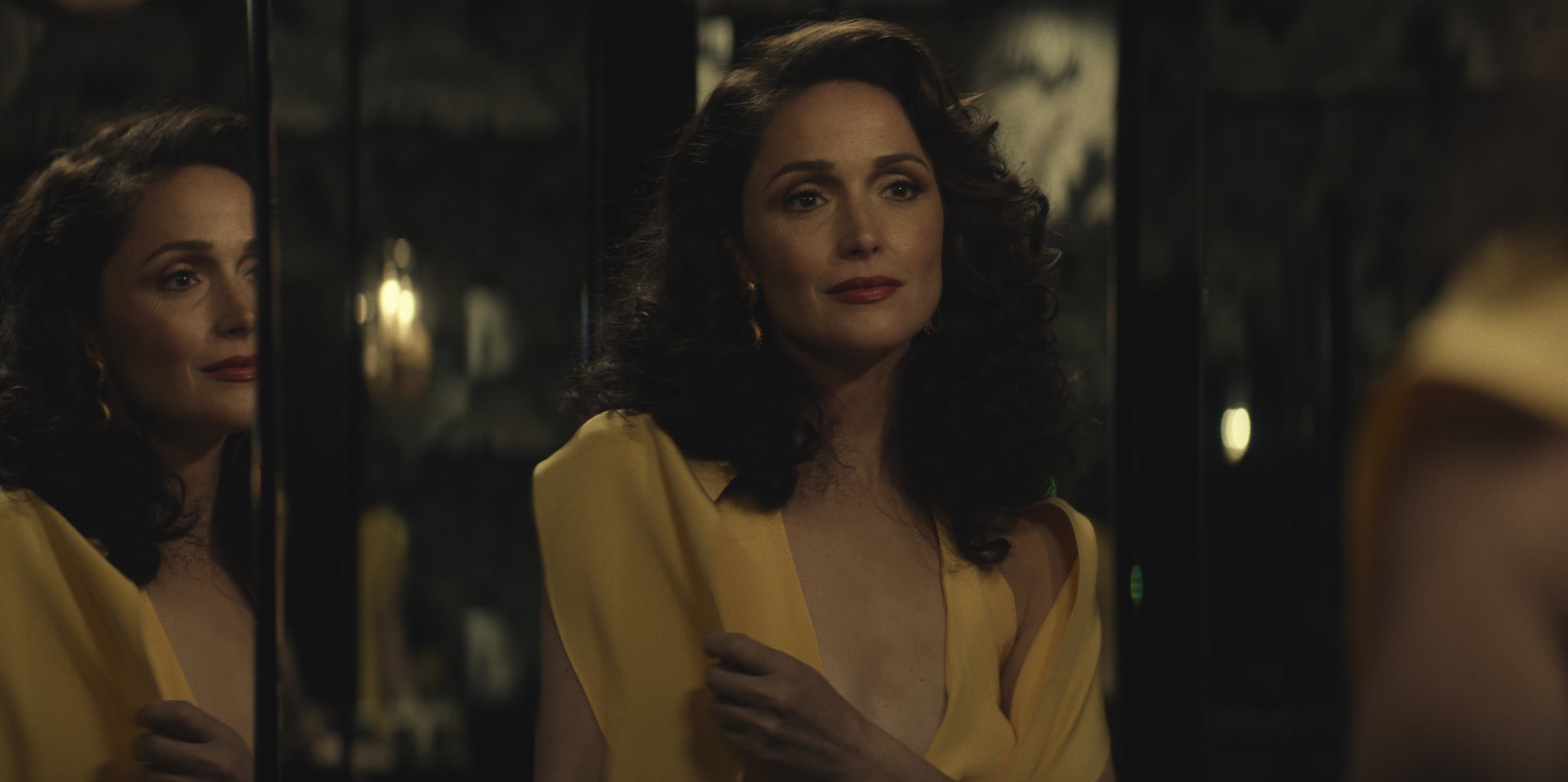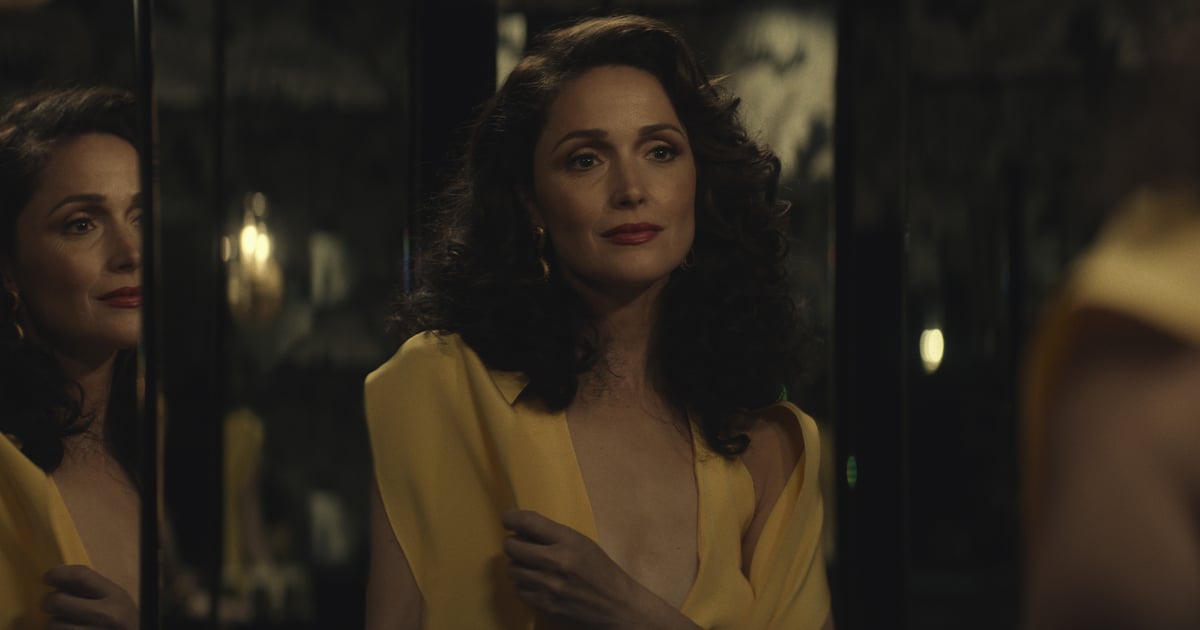
From the outside, Sheila Rubin is a charming, put-together wife, mother, and aerobics lover eagerly pursuing her passion-turned-business in 1980s San Diego. Internally, the main character of Apple TV+’s “Physical,” played by Rose Byrne, is harshly judgmental of everyone around her, from her failed-politician husband to overly enthusiastic friend Greta. But that judgment pales in comparison to her own self-critique, stemming from a lifelong struggle with binge eating, bulimia, and unresolved childhood trauma. When season two of the show begins, she’s swapped the eating disorder for an affair with her husband’s political rival. Spoiler alert: her problems don’t go away.
Playing Sheila and portraying her mental and emotional struggles isn’t easy, and Byrne admits feeling “constantly terrified” by the difficult role. “Every scene is so specific . . . and challenging,” she tells POPSUGAR. “I’m always like, ‘oh, I hope we don’t screw this up.'”
Byrne leans on her “emotional touchstone,” Annie Weisman, the show’s creator, writer, and executive producer. “Physical” is based on Weisman’s own experience with an eating disorder and, as we see in season two, the wrenching journey of recovery. “[The eating disorder] was something that for me, and for a lot of people, was very private and very internal and not shared with anyone, even with the people closest to me,” Weisman tells POPSUGAR, resulting in the kind of “divided” life that Sheila has. “There’s one person they’re showing the world, and then one they’re keeping secret,” Weisman explains. “But with the tools of television storytelling, we get access to that secret life.”
She’s referring to “Physical”‘s use of voiceover to pull Sheila’s inner critic out into the open. In a scene in the first episode of season two, for example, Sheila silently hypes herself up for a party, then descends the stairs while her inner voice monologues in the background. “Doesn’t look like anyone here is much of a threat,” it says snidely. “Not that there’s much competition here. It’s San Diego, not Paris.” When she turns down a tray of hors d’oeuvres, the voice praises her. “Good girl. Stay hungry. Stay focused.”
Weisman’s idea to let us hear Sheila’s true thoughts and feelings — which run so contrary to her pleasant, friendly appearance — was the “seed for telling this story,” she says. In season one, Sheila stopped at nothing to maintain her perfect facade. “She’s really trying to outrun her problems,” Weisman explains. “Years of hiding and secrecy have taught her to keep telling one lie to cover up two lies, and then four lies to cover up those two lies.” But in season two, “she runs out of room,” as Weisman puts it. The lies catch up, and “she hits rock bottom.”
That’s when Weisman pulls back the curtain on eating disorder recovery. She wanted to show it in an empathetic and understanding way, she tells POPSUGAR, “and I think one of the best ways to do that is to show the struggle.” Sheila does end up getting help, but confronting her trauma and her inner demons (including that incessant voice) was never going to be easy. “I want to give hope and optimism to people, because . . . there really is healing and there really is recovery available,” Weisman says. At the same time, she knew she had to be realistic about the struggle, so we see characters fighting the process tooth and nail and backsliding into old habits. Eating disorder recovery, we see, is not a linear journey.
It’s not all about food, eating, and body image either. By the beginning of season two, Sheila isn’t actively binging anymore, “but that doesn’t fix the problem,” Weisman points out. “That’s a myth that I wanted to help dispel. She’s got to actually address the underlying issues in her past and her relationship to her family and her own trauma.”
For Weisman, creating a show so intimately inspired by her own experiences with bulimia and recovery has been both challenging and cathartic. “There are moments where it feels like it brings up old pain, and there’s difficulty, but it’s absolutely rewarding and worth it,” she says, noting the positive feedback she’s received from other people who have had eating disorders. Even the setting and time period of “Physical” — 80s-era San Diego — was inspired by Weisman’s own life. “[It’s] the time and place of my childhood,” she explains. Southern California was (and remains) a very image-focused, body-conscious place, and it was around this time that women began viewing and treating their bodies differently, Weisman explains.
“Women were finding ways to turn [the focus on their bodies] from an oppressive force to a kind of powerful force,” Weisman says. Women-owned fitness studios were popping up when, a few years prior, it was considered dangerous or unhealthy for women to exercise (another misconception Sheila overcomes in this season). “There was just all this new understanding that women could do strength training, that they should do strong aerobic fitness,” Weisman says. “That these things were healthy.” The result? Sheila discovers a future touchstone of modern fitness: that even the most “Physical” journeys might lead to mental and emotional growth, too.
Season two of “Physical” airs every Friday on Apple TV+. (Note that the show includes frank discussions and portrayals of eating disorders.)
Image Source: Apple TV+
